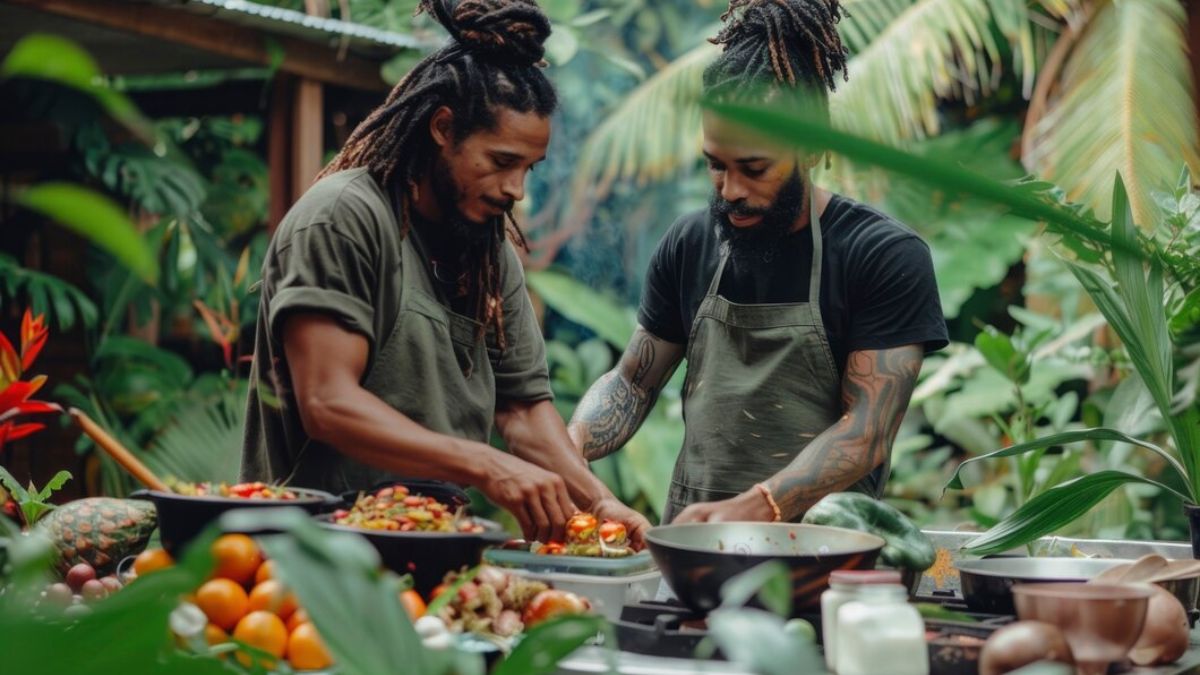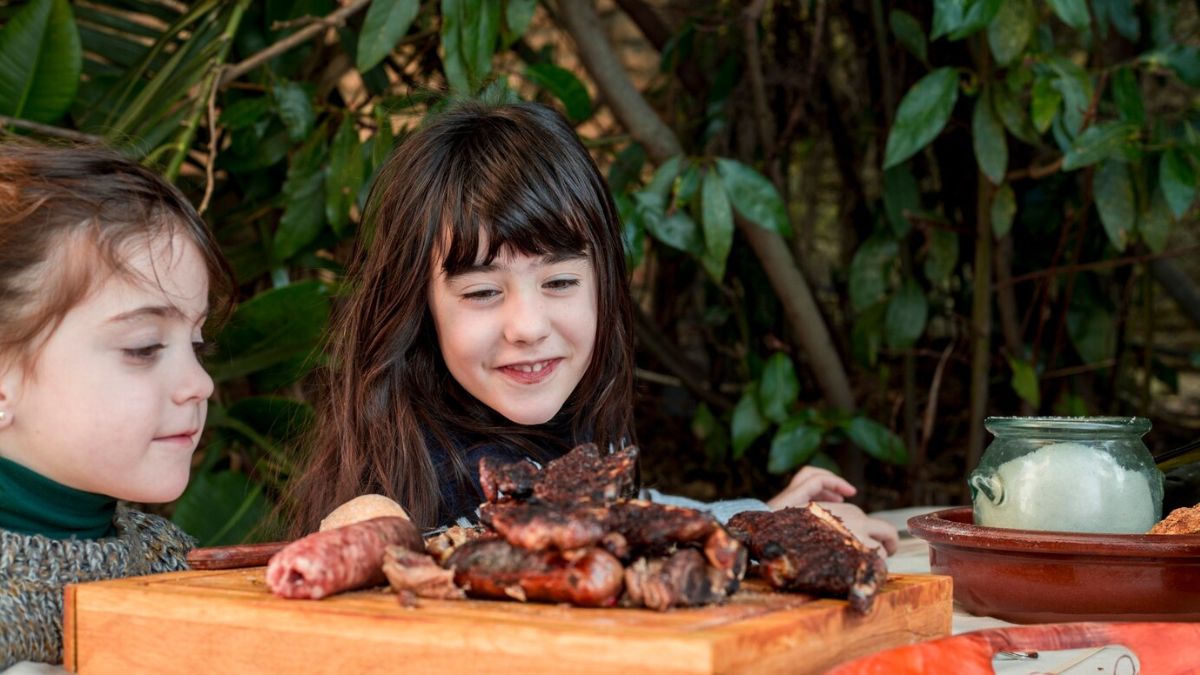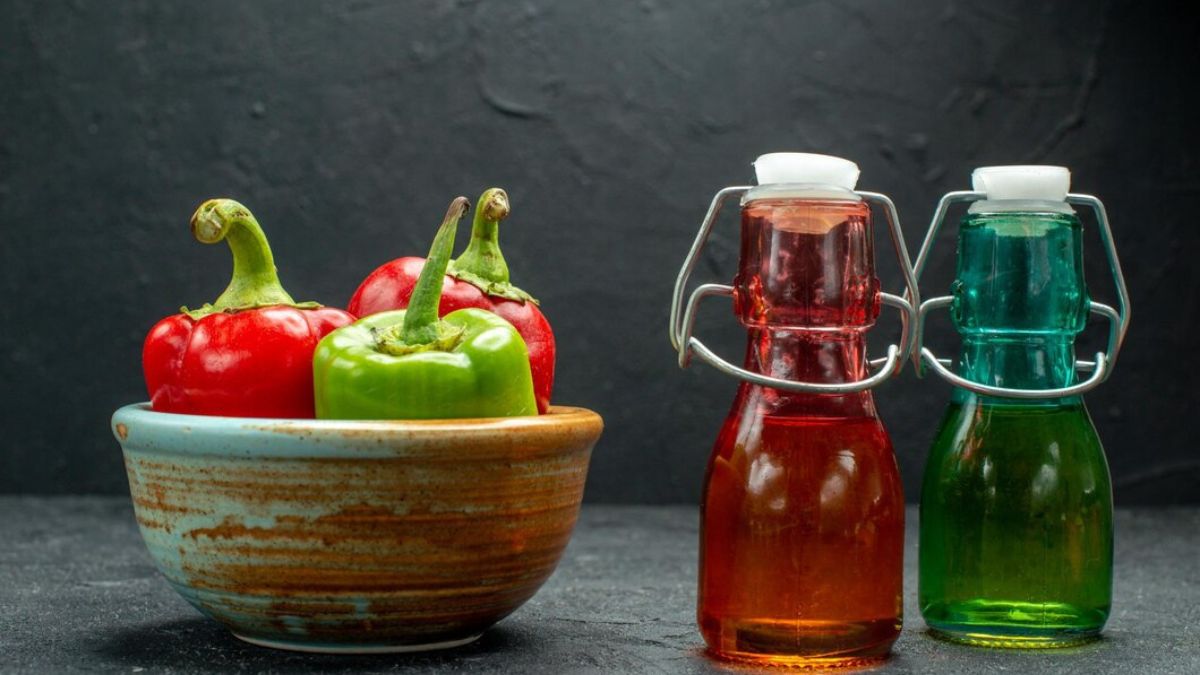FOOD
Crack the Clue, Exploring the Cold Yogurt Drink Crossword Answer

If you’re a crossword puzzle enthusiast, you know the thrill of both the challenge and the “aha!” moment when you finally crack a tricky clue. Recently, one clue that has been puzzling many is “cold yogurt drink.” What is it, and what are the possible answers? This blog dives into the answer while exploring its origins, cultural significance, and uses.
What Is the “Cold Yogurt Drink” in Crosswords?
For crossword fans, the clue in question might initially seem vague. A “cold yogurt drink” can refer to traditional beverages consumed around the world that are yogurt-based, cold, and often enjoyed for their refreshing qualities.
The most common answer? The solution to this crossword clue is likely “lassi.”
However, there may be other regional variations or specific names that crossword setters might consider. Keep reading to discover more about lassi and other popular yogurt drinks!
What Is Lassi?
Lassi is a traditional yogurt drink that originates from India and is widely consumed across South Asia. It’s known for its creamy texture, tangy flavor, and the ability to cool you down on a hot day. The drink is versatile—you’ll find both savory and sweet variations, depending on personal taste and regional preferences.
Types of Lassi:
- Sweet Lassi
A blend of yogurt, sugar, and water, sometimes flavored with cardamom, rose water, or saffron.
- Salted Lassi
Made with yogurt, salt, and spices like cumin, this version pairs well with hearty Indian meals.
- Mango Lassi
A popular sweet version blended with fresh mango pulp for a tropical twist.
Lassi has become globally recognized and is often served in Indian restaurants worldwide. It’s not just a crossword answer; it’s a delicious cultural emblem!
Other Cold Yogurt Drinks from Around the World
If you’ve filled in the crossword and found “lassi” doesn’t fit, don’t worry! There are plenty of other yogurt-based drinks that might work depending on the number of letters and clues in the puzzle. Here are some potential alternatives:
1. Ayran
Ayran is a refreshing yogurt drink popular in Turkey, the Middle East, and Central Asia. It’s made with yogurt, water, and a pinch of salt—straightforward yet incredibly thirst-quenching. Ayran is often served alongside kebabs or other grilled dishes.
If the crossword puzzle clue hints at something Turkish or savory, Ayran might just be your answer.
2. Doogh
From Iran, doogh is a close relative of Ayran. It’s also a salty yogurt drink mixed with water, often enhanced with dried mint or other herbs. Doogh is a great accompaniment to meals, especially during scorching summers.
3. Kefir
This fermented yogurt drink hails from the Caucasus region and has gained global popularity due to its probiotic benefits. Kefir is tangy, effervescent, and often consumed for its health benefits. It’s a potential crossword solution when the clue aligns with “fermented” or “probiotic.”
4. Tan
Another option could be Tan, an Armenian drink similar to Ayran. Slightly fizzy and salty, Tan stands out for its ability to curb thirst and aid digestion.
5. Borhani
A Bangladeshi yogurt drink, borhani is spiced, savory, and often served during weddings or festive meals. It’s slightly more niche and regional, but it could be the perfect crossword-fit for certain puzzles.
Cultural Significance of Cold Yogurt Drinks
While cracking crossword clues is fun, these drinks are more than just answers. They hold deep cultural roots and play functional roles in cuisines worldwide. Here’s why yogurt drinks matter:
- Cooling Effect
Yogurt-based drinks are perfect for hot climates as they cool the body and prevent dehydration.
- Digestive Benefits
Many, like lassi and kefir, are probiotic-rich, aiding gut health and digestion.
- Culinary Pairing
These drinks often accompany spicy meals, tempering the heat and enhancing flavors.
- Cultural Identity
Whether served at weddings, festivals, or casual meals, drinks like Ayran and borhani reflect traditions and regional pride.
Making Your Own Cold Yogurt Drink at Home
Why not take inspiration from crossword puzzles and recreate these drinks in your kitchen? Here’s a quick recipe for lassi—simple, delicious, and customizable.
Sweet Lassi Recipe
Ingredients:
- 1 cup plain yogurt
- ½ cup cold water
- 2-3 tablespoons sugar (adjust to taste)
- A pinch of cardamom powder
- (Optional) 1 teaspoon rose water
Instructions:
- Blend all ingredients together until smooth.
- Pour into a glass, garnish with a sprinkle of cardamom or saffron.
- Serve chilled and enjoy!
For a savory twist, replace the sugar with salt and add roasted cumin powder or fresh mint leaves.
Why Do Crossword Creators Love “Cold Yogurt Drink” Clues?
Crossword setters often use niche or culturally significant words to challenge solvers, and cold yogurt drinks fit the bill perfectly. These clues require solvers to think globally—exploring food, culture, and even etymology:
- Global Appeal
Words like “lassi,” “ayran,” and “kefir” connect to unique cultures and cuisines, adding variety to puzzles.
- Interesting Word Structures
Many yogurt drink names are short and vowel-dense, making them ideal for crossword grids.
- A Learning Opportunity
For many solvers, encountering these terms is a gateway to discovering something new.
Next Time You Encounter the Clue…
Whether you’re a casual crossword player or a seasoned solver, the “cold yogurt drink” clue is as much about learning as it is about solving. With answers like lassi, ayran, and kefir, crossword puzzles don’t just test your vocabulary—they transport you to different corners of the world.
Unpause your crossword app or grab your puzzle book, and the next time you see this clue, sip on a refreshing yogurt drink for inspiration. Who knows? You might just create your own twist on lassi while solving challenging crossword clues.

FOOD
Authentic Caribbean Culinary Experiences for Adventurous Travelers

Introduction to Caribbean Cuisine
For those with an adventurous palate, the Caribbean offers a treasure trove of culinary delights as diverse as the islands. Each region boasts its flavorful specialties, influenced by a melting pot of cultures, including African, Indian, European, and Indigenous peoples. From the bustling streets to serene beaches, there is always good food in Cayman and beyond, waiting to be discovered by the curious traveler. A journey into the culinary heart of the Caribbean unveils diverse flavors and delves into the rich stories that have shaped these vibrant dishes.
Caribbean cuisine reflects a harmonious blend of cultural influences, each leaving an indelible imprint on the region’s vibrant palate. The excitement of tasting freshly prepared dishes in this tropical paradise is unparalleled, offering a sensory adventure for every foodie. From fiery spices to sweet, tropical fruits, the ingredients and cooking styles vary widely, but each dish tells a story of heritage and tradition. Dive in with us as we explore authentic Caribbean culinary experiences that will tantalize your taste buds.
Signature Dishes You Must Try
- Jerk Chicken: This dish is the epitome of Caribbean flavor, a fiery blend of spices and slow-cooked perfection. The technique involves marinating chicken in a spicy mixture and smoking it over a wood fire, which imparts a distinct savory and smoky taste that is beloved by both locals and visitors.
- Conch Fritters: Conch, a type of mollusk, is a staple in many Caribbean diets. These delicious fritters are deep-fried and seasoned to perfection, providing a taste of island life as refreshing as the ocean breeze.
- Ackee and Saltfish: Jamaica’s national dish is a delightful combination of fruit and fish, a must-try for the adventurous. Ackee, a soft and creamy fruit, is sautéed with saltfish, peppers, onions, and spices, resulting in a savory, comforting, exotic flavor profile.
- Callaloo: This leafy green stew is a staple in Caribbean households, reflecting the bounty of local ingredients. Made with greens akin to spinach, it can include meats or seafood and is often spiced with hot peppers, adding depth and heat to the dish.
Each dish showcases the rich tapestry of ingredients and cooking methods that define the Caribbean’s authentic culinary experiences. They are not just meals but a celebration of the island’s cultural diversity and culinary innovation.
The Impact of Local Ingredients
The Caribbean’s tropical climate is a boon for diverse and abundant produce. Ingredients like plantains, yams, coconuts, and fresh seafood are key components in many traditional dishes, lending authenticity and freshness. Local farmers and markets are vital to the culinary landscape, offering seasonal produce that changes with the tides and climate. The richness of local agriculture can be explored further through resources such as the Caribbean Agricultural Research & Development Institute, which delves into sustainable farming practices across the islands. By emphasizing locally sourced ingredients, the Caribbean cultivates a food culture that is both sustainable and delicious.
The Role of Festivals and Celebrations
Festivals in the Caribbean are more than just celebrations; they are feasts for the senses and play a pivotal role in showcasing the region’s rich culinary narrative. Events like Carnival are about music and dance and indulging in a vast array of local specialties. Festival foods often include spicy stews, roasted meats, and sweet coconut treats, all bringing communities together in joyous revelry. These celebrations highlight the Caribbean’s spirit and love for food, encouraging visitors to participate in the culinary party.
Street Food Adventures
One of the most thrilling ways to experience Caribbean culture is through its vibrant street food scene. Vendors sell an array of tasty delights, including patties, rotis, and churros, each offering a unique taste of the Caribbean. Street foods like grilled corn, spice-coated nuts, and fried plantains are staples you can enjoy while wandering through bustling market streets. Discovering these delicacies on the go unveils flavors hidden in busy marketplaces and provides an authentic culinary experience. For a broader perspective on how street food influences different regions, the Street Food Institute offers insights into the global impact of street cuisines. These bite-sized delights present a culinary adventure in every bite.
Influences from Around the World
Caribbean cuisine is a melting pot of global influences, harmonizing traditions from Africa, India, and Europe. Indian spices such as turmeric and cloves, African root vegetables like cassava, and European cooking techniques, including breadmaking and baking, have been lovingly amalgamated to produce a distinctive, exotic, and comforting flavor profile. The Caribbean transforms these influences into something unique, showcasing its resilience and adaptability in the kitchen. The diversity of the region is not only seen in its population but also its cuisine.
Cooking Techniques and Traditions
Traditional cooking methods such as grilling over open flames, stewing, or slow roasting in pits bring out the rich, deep flavors of native ingredients that modern methods rarely achieve. Such techniques have been passed down through generations, preserving Caribbean dishes’ authenticity and cultural significance. These methods enhance the taste, whether it’s the smoky flavor of jerk chicken or the tender, aromatic stews common in Caribbean kitchens. Cooking is not just about food preparation here; it is an art form that keeps the history and stories of the islands alive.
Embracing Sustainability in Caribbean Cooking
As the global demand for sustainability grows, Caribbean chefs are increasingly adopting eco-friendly practices. Adopting sustainable seafood choices, organic farming, and initiatives to reduce waste allow travelers to enjoy guilt-free dining while supporting local ecosystems. Emphasizing farm-to-table practices and promoting indigenous ingredients, the Caribbean embodies an environmental ethic that aligns with global trends toward culinary sustainability. These efforts help ensure that visitors and locals can continue to delight in these islands’ beautiful resources.
Conclusion
Embarking on a culinary journey through the Caribbean promises delectable flavors and provides a window into the region’s rich cultural tapestry. From street vendors to high-end restaurants, each bite offers a story of resilience, celebration, and community. The islands offer a culinary adventure as spirited as its people, where food is not just sustenance but an experience steeped in tradition and diversity. So, pack your bags and prepare your taste buds for an unforgettable food adventure in the Caribbean, where every meal celebrates life.
FOOD
Discovering Souse Meat: A Vibrant Flavor Adventure!

Curious about souse meat? Get ready to explore a colorful, zesty, and tangy culinary tradition that’s deeply loved across the globe. From its unique preparation to its bold taste, souse meat is more than just food—it’s a cultural celebration!
Whether you’ve never heard of it or you’re looking to understand it better, this guide will answer all your questions. What is souse meat? How is it made? Where does it get its zingy flavor? And, of course, how can you enjoy it in your own kitchen? Let’s dig in!
What Exactly is Souse Meat?
Souse meat, also known simply as “souse,” is a type of pickled meat dish. At a glance, it could be described as part salad, part terrine, with a history as vibrant as its flavor.
Traditionally, souse is made by pickling cooked cuts of pork—think pig’s feet, ears, or other flavorful cuts—in a brine of vinegar, water, spices, and citrus juices. Over time, the meat absorbs all these tangy, zesty flavors, giving it a characteristic punch that makes it stand out!
But here’s the twist—souse can vary a lot depending on where it’s made. It’s a beloved dish in the Caribbean, parts of the southern United States, and even some European countries like Germany and the Netherlands! Each region has its own spin, which makes trying different versions of souse meat an adventure in itself.
Fun Fact:
The word “souse” comes from an old English term meaning “to pickle or steep in vinegar.” Talk about bringing history to your plate!
Why is Souse Meat Special?
Souse meat retains a rustic charm and an unmistakable flair for bold, layered flavors. Let’s break it down:
- Uniqueness of flavor – The tangy brine mixed with spices like allspice, garlic, and peppercorns creates a taste explosion! It’s tangy, citrusy, savory, and slightly spicy all at once.
- A connection to culture – Souse is so much more than food. It’s cherished as a family tradition, a festive favorite, and a way to share history.
- Surprisingly versatile – It’s the ultimate “love it or try-it” dish. Souse can be eaten on its own, served on crackers, added to salads, or paired with sides like plantains or rice for a complete meal.
- Nutritional content – Souse is protein-packed and, in most cases, relatively low in carbs, making it an appealing option for adventurous foodies keeping an eye on healthier eating!
Is Souse Similar to Head Cheese?
If you’ve heard of head cheese (not an actual cheese!) you may notice similarities. Both are jellied meat dishes. However, souse is set apart by its unique pickled brine that infuses the meat with a zippy, acidic kick that head cheese doesn’t have.
How is Souse Meat Made?
Curious to try making it yourself? Here’s how it all typically comes together:
Ingredients:
At its core, you’ll need:
- Pork (like pig’s feet, tongue, ears, or pork belly)
- Vinegar and water (for the brine)
- Fresh citrus juices like lime or lemon
- Spices such as garlic, onions, allspice, cloves, and a bit of pepper for heat
- A pinch of salt and sugar for balance
Preparation Steps:
- Cook the Meat
The pork is thoroughly boiled until tender. The long, slow cooking helps the collagen break down, creating that tender, gelatinous texture.
- Prepare the Brine
The vinegar, citrus juices, and spices are mixed together to create that flavorful brine. Some variations even include Scotch bonnet peppers for a Caribbean-inspired hot and spicy vibe!
- Pickling Magic
Once the meat is cooked, it’s immersed in the brine for hours (or overnight). The longer it sits, the more flavor it absorbs.
- Chill and Serve
Souse is usually served cold as a refreshing, zesty dish.
If you’re feeling adventurous, it’s easier than you might think to try making this at home, and once you do, it will easily impress at your next gathering.
Regional Twists on Souse Meat
Souse recipes have traveled the globe, so don’t be surprised if the version you come across tastes a little different than you expect. Here’s a snapshot of some regional varieties:
- Caribbean Souse
Expect zesty citrus and fiery Scotch bonnet peppers—heat lovers will rejoice! It’s often served with bread or festival and sometimes includes boiled pigs’ feet for extra flavor and richness.
- Southern U.S. Souse
This more traditional approach sticks to tangy vinegar-forward flavors with subtle spice. Some variations are even made into a spreadable form for biscuits or crackers!
- European Souse
Here it leans more traditional and close to head cheese. Vinegar is toned down, and gelatin is used to set the dish into a firm terrine form.
The best part? Each bite of souse is like a passport stamp—bringing the spirit of a region to your plate.
How to Enjoy Souse Meat
The possibilities are endless when it comes to how you enjoy souse meat! You can:
- Serve it as an appetizer on crackers or toast points
- Include it as an entrée alongside greens, sweet potatoes, or fresh coleslaw
- Eat it chilled, as is, for a refreshingly tangy burst of flavor
- Pair it with your favorite beer or tropical cocktail for a match made in culinary heaven!
Is Souse Meat for You?
If you love bold flavors and aren’t afraid to step out of your comfort zone, souse meat could be your new foodie obsession! While its preparation may feel adventurous, that first tangy, spicy bite will make it worth every step. Plus, tasting and learning about souse is an amazing way to connect with traditions and culinary techniques from around the world.
Whether you try a homemade recipe or pick some up from a Caribbean deli, souse meat promises a culinary experience to remember.
Turn Your Table Into a Flavor Destination!
Still curious? Why not start with a recipe and see where your taste buds lead you? Souse meat might be an unconventional star at your next dinner party or a fascinating conversation starter for foodie friends.
Be bold, experiment, and always savor the adventure on your plate!
FOOD
What’s the Buzz About Chamoy Pickles? Here’s Why Everyone’s Obsessed

Take a stroll on TikTok, and you’re bound to stumble across the bright red, tangy, and spicy wonder that has everybody talking—chamoy pickles. This unique snack combines bold flavors and playful experimentation, making it a viral obsession among foodies and adventurous eaters alike.
But what exactly is a chamoy pickle? How did it rise to fame, and—most importantly—how can you recreate this flavor-packed snack at home? If you’re ready for a world of sweet, spicy, tangy flavor explosions, read on!
What Is a Chamoy Pickle?
At its core, a chamoy pickle is a dill pickle that has been soaked in chamoy—a Mexican condiment made from salted fruits like apricots, plums, or mangos, mixed with a blend of chili powder and lime. The chamoy not only infuses the pickle with a burst of flavor but also turns it a stunning (and slightly intimidating) ruby red hue.
The result? A snack that’s tangy, spicy, salty, and sweet all at once! For many, it’s a love-at-first-bite kind of treat, while for others, it’s a daring flavor adventure.
Why Are Chamoy Pickles Suddenly Everywhere?
Food trends tend to take off when they’re quirky and camera-ready—and chamoy pickles check both of those boxes. Influencers, food bloggers, and TikTok creators have latched onto the snack, often featuring vibrant visuals, over-the-top toppings, and fun “pickle ASMR” in their videos.
Plus, the appeal goes beyond just visuals. Chamoy pickles are the perfect mix of bold flavors, nostalgia for classic Mexican treats, and DIY creativity, making them an irresistible trend for people of all ages.
Can we also credit spicy snack culture here? Absolutely! From hot Cheetos to chile-covered mangos, global foodies have been craving and celebrating heat-packed snacks for years. Chamoy pickles are the next evolution of this trend.
How to Eat Chamoy Pickles
Here’s where things get even more exciting! Chamoy pickles aren’t just a solo snack—they’re a flavor canvas where you can experiment to your heart’s content. Here are some of the most creative ways to enjoy them:
1. Straight Out of the Jar
Sometimes, simplicity is best. Grab your chamoy pickle and enjoy it as-is for an intense flavor experience. Don’t forget a napkin—things can get messy!
2. Stuffed with Candy or Tajín
Craving extra sweetness or spice? Hollow out the pickle and stuff it with chamoy candies, tamarind straws, or a sprinkle of Tajín seasoning for an extra kick.
3. Paired with Chamoy Gummies
For the ultimate sweet-and-spicy treat, pair your pickle with chamoy-covered peach rings, gummy bears, or watermelon candies. This combination is a flavor sensation!
4. Chopped and Topped
Dice your chamoy pickles into chunks and drizzle them with hot sauce, lime juice, or even melted cheese for a savory twist. You can also add them to a spicy fruit salad for contrast.
5. Chamoy Pickle “Shot” Cups
For a party-ready snack, hollow out a chamoy pickle and use it as a shot glass for your favorite beverage—think micheladas, spicy seltzers, or virgin margaritas. It’s a conversation starter!
How to Make Chamoy Pickles at Home
Are you eager to join in on the fun but can’t find chamoy pickles near you? Don’t worry—you can make your own at home, and the process is so simple!
What You’ll Need:
- A jar of dill pickles (the crunchier, the better!)
- 1 cup of chamoy sauce (store-bought or homemade)
- 1 tablespoon of chili powder (for heat lovers, Tajín works great here!)
- A glass container or resealable plastic bag
Instructions:
- Prep Your Pickles
Remove the dill pickles from their brine and slightly rinse them if desired. This lets the chamoy soak in even better. Pat them dry with a paper towel.
- Marinate in Chamoy
Place the pickles into a glass container or resealable plastic bag. Pour the chamoy sauce over them until they’re completely covered. Add chili powder for extra heat, then seal the container or bag securely.
- Refrigerate Overnight
This is where the magic happens! Leave the pickles to marinate in the chamoy mixture for at least 12 hours in the fridge. The longer they soak, the more intense the flavor will be.
- Enjoy!
Once they’ve marinated, your chamoy pickles are ready to eat. Slice ’em, dice ’em, or munch straight from the container—it’s all up to you!
Where to Buy Chamoy Pickles
If DIY isn’t your style, you can still get your hands on chamoy pickles without breaking a sweat. Many online retailers and specialty Mexican food shops sell them pre-made. Here are a few places to check out:
- Amazon
- MexGrocer
- Local Mexican Markets
Pro tip: Look for brands that use natural ingredients for the freshest flavor and authentic chamoy experience.
Pro Tips for Enhancing Your Chamoy Pickle Experience
- Pair with Beverages: A cold fizzy soda or a michelada pairs beautifully with the intense flavor of chamoy pickles.
- Make a Platter: Impress your foodie friends by creating a platter with chamoy pickles, chili-dusted fruits, and spicy chips.
- Experiment with Pickle Types: While dill pickles are the most common, feel free to try bread-and-butter or spicy pickles for unique results.
Why You Should Give Chamoy Pickles a Try
Chamoy pickles might sound like a wild food experiment, but their popularity speaks for itself. They’re vibrant, bold, and endlessly customizable, making them a fun addition to any foodie’s menu.
Whether you’re eating them as-is, experimenting with crazy toppings, or creating your own at home, chamoy pickles are a flavorful trend worth exploring. Trust us—your tastebuds will thank you.
Excited to take your snacking game up a notch? Share your chamoy pickle creations with your friends (and on social media) because we all know the snacking adventure is even better when shared. 🌶️
-

 EDUCATION7 months ago
EDUCATION7 months agoHighlights From the September 18 Board of Education Meeting
-

 PLATFORM6 months ago
PLATFORM6 months agoThe Ultimate Guide to MyDesi.Net – Where Culture Meets Connection
-

 EDUCATION7 months ago
EDUCATION7 months agoA Look Back at the Board of Education City of Linden 2020 and Manganello’s Impact
-

 TECHNOLOGY7 months ago
TECHNOLOGY7 months agoUnderstanding Mega-Personal.Net Technology and Its Applications
-

 TRAVEL7 months ago
TRAVEL7 months agoTravel Smarter with TravelsForNow, Your Guide to Exploring the World
-

 GAME6 months ago
GAME6 months agoWhat is Steamrip? Everything You Need to Know
-

 BUSINESS6 months ago
BUSINESS6 months agoHow Coyyn.com Is Revolutionizing the Digital and Gig Economy for Entrepreneurs and Investors
-

 CRYPTO6 months ago
CRYPTO6 months agoCrypto Wallets 101, What You Need to Know About eCRYPTO1 Wallets